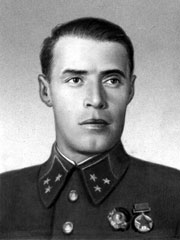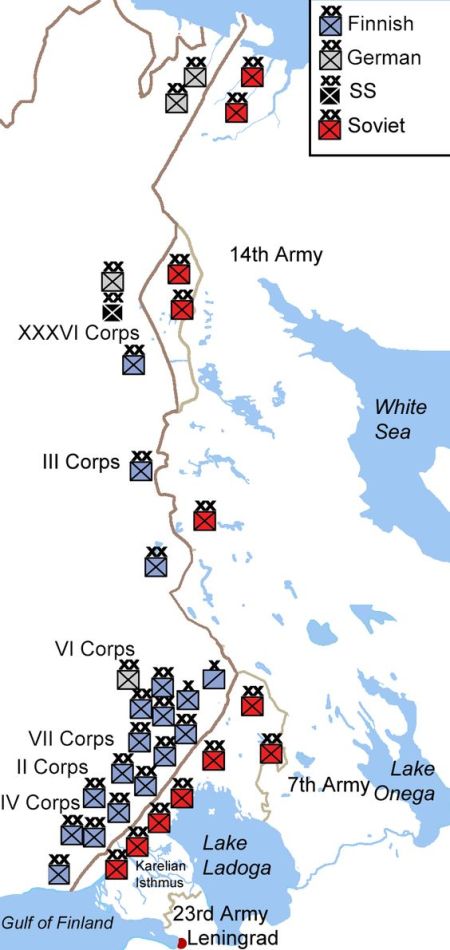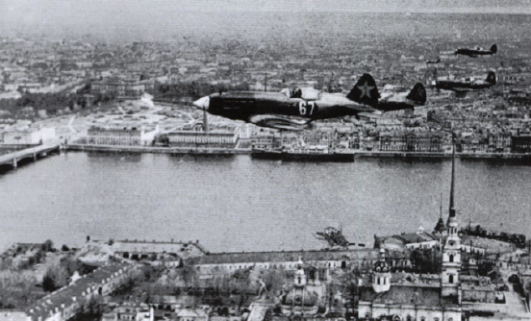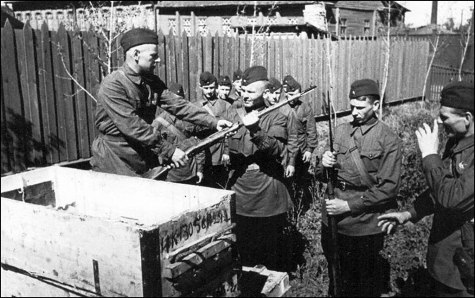[English version at the end]
PROTAGONISTAS DE BARBARROJA
¡Ya a la venta Barbarroja 03:00 hrs!
TENIENTE GENERAL MARKIAN MIKHAILOVICH POPOV (1902 -1965)

De la plantilla de generales rusos quizá sea uno de los grandes desconocidos, por no tomar parte inmediata en los combates de la campaña de invasión de la URSS ordenada por Adolfo Hitler. Se alista como voluntario en el RKKA (Ejército Rojo de Trabajadores y Campesinos) en 1920 en plena guerra civil rusa, combatiendo en el Frente Occidental y se une un año después al Partido Comunista. Es herido en combate. Se gradúa en la prestigiosa academia militar del RKKA de Frunze en 1936 y pasa destinado a tropas mecanizadas.
Al comienzo de la Operación Barbarroja ejerce el mando del Distrito Militar de Leningrado, cargo que ostenta desde el mes de enero de 1941. Tal designación administrativa se transforma al comienzo de las hostilidades por la más operativa de Frente Norte. Un «frente» equivale aproximadamente a un grupo de ejércitos de la Wehrmacht. En este olvidado, pero no menos importante sector del vasto teatro de operaciones soviético, ejercerá Popov su mando en una extensa línea de frente que transcurre desde el Mar Blanco, combatiendo a las tropas alemanas en Noruega y hacia el sur, hasta el istmo de Carelia a los finlandeses y aún más al sur de Leningrado, al Grupo de Ejércitos Norte del mariscal von Leeb.
El orden de batalla a 22 de junio de 1941 es el que sigue:
– 7º Ejército (Finlandia, teniente general F. D. Gorelienko)
– 14º Ejército (Murmansk, teniente general V. A. Frolov)
– 23º Ejército (Viborg, teniente general P. S. Pshennikov)
– PVO <> Defensa Anti-aérea (Leningrado, general de brigada F. Ya. Kryukov)
– VVS <> Fuerza Aérea Frontal (Leningrado, general de brigada A. A. Novikov)

La fuerza aérea de la que dispone el teniente general Popov totaliza unos 1.500 aviones, como arriba mencionado, al mando de Novikov. Una fuerza esta indudablemente a tener en cuenta, pero en su inmensa mayoría se compone de aparatos anticuados Polikarpov I-15 e I-16 entre los de caza y los Tupolev SB, DB-3 y TB-3, entre los de bombardeo. Tal fuerza queda dislocada en aeródromos cubriendo el suroeste de Leningrado, próximos a Pskov, Novgorod, Lish y Gatchina, pero también al norte de Leningrado y el istmo de Carelia. En cuanto a la defensa anti-aérea (PVO) de la capital cultural de Rusia, recibe Popov un importante empuje al incorporar en plantilla nuevas y potentes piezas de 85 mm.
Desde la finalización de la «Guerra de Invierno» contra Finlandia en 1940, el Leningradskij Voyenno Krug <> Distrito Militar de Leningrado construye tres sectores defensivos en su zona norte (istmo de Carelia), obras iniciadas desde el otoño de 1940. Estos están en Viborg, Keksgolm y Sortaval. La idea es impedir cualquier progresión de los fineses hacia Leningrado y Petrozavodsk. No obstante, para el comienzo de las operaciones de Barbarroja, las defensas distan mucho de estar acabadas y son deficitarias en armamento contracarro. También en la zona suroccidental del Distrito (Pskov y antigua frontera con Estonia), las zonas defensivas tienen aún poca entidad.
El teniente general Popov es sorprendido por la Operación Barbarroja el 22 de junio de 1941 a las 03:00 horas (Berlín) en Petrozavodsk de regreso a Leningrado, tras una visita a la Flota Norte; pero no será hasta su arribada a Leningrado cuando reciba noticias de que la guerra con Alemania ha comenzado. Exactamente a esa hora aeroplanos de la Luftwaffe sobrevuelan la base de la Flota Norte en Polyarny. No obstante Markian Mikhailovich Popov no tiene que lamentar daños por ataques aéreos ni en Leningrado, ni en otros objetivos importantes de su Distrito Militar. El principal frente de batalla de la campaña de invasión de la URSS se concentra por el momento en la antigua república Lituana, Bielorrusia y Ucrania. A su llegada por fin al cuartel general, Popov no tarda en recibir una directiva ordenando llevar a cabo ataques aéreos contra aeródromos del adversario y concentraciones de tropas, aunque la directiva no permite acciones ofensivas ni contra Finlandia ni Rumanía.
Respecto a su adversario del norte, las tropas finesas del mariscal Mannerheim, el jefe del Frente Norte estima que el grueso de estos efectivos se concentran en el istmo de Carelia y la región adyacente a Petrozavodsk (12-14 divisiones de infantería y otras 4-5 brigadas). Iniciada la Operación Barbarroja, Popov se extraña de que Mannerheim no se lance a la vez a la ofensiva junto con la Wehrmacht de manera coordinada. Al final del 22 de junio, todas las fuerzas del Distrito Militar de Leningrado están ocupando ya puestos defensivos a la espera de órdenes ulteriores.

Durante el día siguiente Popov va recibiendo informes inquietantes de su Distrito vecino hacia el oeste. Es el nuevo Frente Noroccidental. Los ejércitos 8º y 11º, a pesar de estar considerados como formaciones con gran nivel de alistamiento, están siendo incapaces de hacer retroceder al Grupo de Ejércitos Norte, bajo constante castigo artillero y aéreo y siendo sorprendidos por avances imprevistos de formaciones acorazadas y motorizadas. En estas circunstancias Popov se prepara y a las 48 horas del comienzo de la invasión ordena el establecimiento de líneas defensivas en su zona sur. La primera de ellas se debe desplegar a lo largo del río Luga. La segunda, desde Peterhof a Gatchina y Kolpino. Ya este día 24 Popov ve con preocupación como las vanguardias de von Leeb están llegando a las aguas del Dvina Occidental, ya casi a las puertas de Pskov. Y esto ya sería su responsabilidad.
El 25 de junio en acción conjunta de la Aviación Frontal (Novikov), más la naval del las flotas del Báltico y Norte, se lleva a cabo un ataque contra bases en territorio finlandés (el mismo Popov lo justifica en sus memorias como una acción de represalia por intentos de la Ilmavoimat (aviación militar finlandesa) de bombardear Leningrado, Kronstadt y otras localidades de la URSS). En total se atacan 20 bases del adversario. En Leningrado en casi todas las plazas, parques y numerosos tejados de edificios se despliegan piezas antiaéreas y globos de barrera. Por primera vez desde el comienzo de Barbarroja en la ciudad se respiran finalmente aires de guerra.

El 26 de junio Finlandia declara la guerra a la Unión de Repúblicas Socialistas Soviéticas. El 29 el comandante del 14º Ejército, general V. A. Frolov, informa que tras una intensa preparación artillera los fineses están llevando a cabo una gran ofensiva en dirección a Murmansk. Popov siente la presión lentamente desde el norte y también desde el sur, pues el 5 de julio el 4. Panzergruppe de Höpner captura Ostrov y ya se encamina hacia Pskov irremisiblemente. Después de Pskov lo único que puede detener a la Wehrmacht es la línea defensiva del Luga, pero esta está lejos de estar lista. No sólo eso, las divisiones de voluntarios «Opolchenye» que está previsto ocupen las posiciones a lo largo de las riberas del río Luga, están aún en fase de formación y adiestramiento.
El mariscal Voroshilov se presenta entonces en Leningrado con un pequeño estado mayor y toma el control el 10 de julio de una nueva estructura de mando deniminada GLAVKOM. Son unos mandos de teatro de operaciones gestados por el Comité de Defensa del Estado (GKO<>Gosudarstvennyj Komitet Oborona). En concreto a Voroshilov, hombre de gran confianza de Stalin, se le asigna el GLAVKOM noroccidental, que engloba a los antiguos frentes Noroccidental (F. I. Kuznetsov) y Norte (M. M. Popov), así como a la flotas del Norte y Báltico. Un día antes el Ostheer (el ejército alemán del frente del este) toma Pskov y este mismo día 10 el mariscal Mannerheim inicia su ofensiva hacia Petrozavodsk.
El día 12 de julio la vanguadia de von Leeb ya está en la carretera Pskov-Luga. Después de la precaria línea defensiva del Luga, Leningrado es el siguiente objetivo al norte ya muy cerca. Popov lamenta que sus fuerzas estén divididas hacia el sur y hacia el norte para defender el gran enclave de Leningrado, la capital cultural de Rusia y cuna del bolchevismo. Otro de los problemas del teniente general es el 8º Ejército, que en la práctica ha quedado copado en la antigua República de Estonia y queda ahora dependiente de su mando al serle transferida esta agrupación desde el Frente Noroccidental. Popov no ignora que la ocupación de Estonia por los germanos supondrá la pérdida de una importante base naval de la Flota del Báltico y abrirá una nueva vía de aproximación del adversario desde el oeste hacia Leningrado, a través de Narva y Kingisepp.
Los trabajos defensivos de la línea fluvial del Luga prosiguen frenéticamente contrarreloj, pero ya el día 13, las tropas motorizadas/mecanizadas de Höpner establecen contacto con los defensores en el sector. Al día siguiente los alemanes se establecen, imparables, en una cabeza de puente en la ribera del Luga. Popov refuerza las líneas con reservas extraídas en la práctica de la nada…Es entonces cuando el general Reinhardt, al mando del XLI. Armeekorps (mot.) siente que Leningrado ya está al alcance de la mano…¡pero se produce un parón operativo! Reinhardt cumple lo ordenado pero se exaspera y Popov respira por unos días.
Así a partir de agosto de 1941 su Frente se unirá al esfuerzo principal de los otros que pugnan por frenar el avance de von Leeb hacia Leningrado. Hacia el noroeste apuntalará las líneas para impedir el acceso finlandés hacia la gran capital. Es en este mes cuando el Frente Norte cambia de denominación y pasa a llamarse Frente de Leningrado. En noviembre de 1941 será relevado y pasará a ostentar el mando del 61º Ejército, que toma parte en la batalla de Moscú.
¿Te ha resultado de interés este artículo? ¿Querrías conocer los detalles de esta y las demas operaciones?
¡Adquiere la obra cronológica Barbarroja 03:00h en edición de coleccionista!
Deja tu comentario abajo y sígue CONQUISTAR RUSIA punteando en la opción «SEGUIR / FOLLOW» a la izquierda de la página
[English version]
BARBAROSSA’S PROTAGONISTS
LIEUTENANT-GENERAL MARKIAN MIKHAILOVICH POPOV (1902 -1965)

He volunteers for the ranks of the RKKA (Red Army of Peasants and Workers) in 1920 during the Russian Civil War. He fights in the Western Front and a year later joins the Communist Party. He is wounded in action. In 1936, he will graduate from the prestigious Frunze RKKA Military Academy and is assigned to mechanized troops.
At the commencement of Operation Barbarossa Markian Mikhailovich is (from January 1941) in command of the Leningrad Military District. Right after the breakout of the war against Germany, this administrative designation changes its name for the more operational «Northern Front». A «front» equates in aproximate terms a Wehrmacht army group. This is possibly one of the least famous sectors of the vast Russian theatre of operations, but the frontlines stretch from the White Sea waters, where he will have to oppose the German forces stationed in Norway, towards the south (Carelian isthmus) against the Finnish and still further south of Leningrad, facing von Leeb’s Army Group North.
As of the 22nd of June, 1941 the order of battle is as follows:
– 7th Army (Finland, Lieutenant-General F. D. Gorelienko)
– 14th Army (Murmansk, Lieutenant-General V. A. Frolov)
– 23rd Army (Viborg, Lieutenant-General P. S. Pshennikov)
– PVO <> Anti-Air Defense (Leningrad, Brigade-General F. Ya. Kryukov)
– VVS <> Frontal Air Force (Leningrad, Brigade-General A. A. Novikov)
The number of airplanes that Lieutenant-General Popov‘s assigned Frontal Air Force (VVS) counts on reaches 1,500. This is a numerous force to bear in mind, but the majority are obsolescent Polikarpov fighters I-15’s and I-16‘s and Tupolev bombers SB‘s, DB’s and TB-3‘s. Such a contingent is deployed covering the southwestern approaches to Leningrad near Pskov, Novgorod, Lish and Gatchina, but also to the north throughout the Carelian Isthmus. Good news is that Popov receives a full suppy of new powerful anti-aircraft 85 mm. cannons for the defense of the capital city (PVO).
Since the end of the Winter War against Finland in 1940, the Leningradskij Voyenno Krug <> Leningrad Military District builds three defensive areas in its northern approaches on the Carelian isthmus. The works start in Autumn, 1940 and are located in Viborg, Keksgolm and Sortaval. The intention is to stop any Finninsh possible aggression towards Leningrad and Petrozavodsk. However, at Barbarossa start these defenses are far from being finalized and are still lacking antitank weaponry. Likewise the defensive belts on the southern and southwestern approaches, those around Pskov and the former Republic of Estonia, are weak.
The war against Hitler surprises Lieutenant-General Popov in Petrozavodsk after a meeting held with the Northern Fleet, on his way back to Leningrad. But it won’t be until he arrives in his headquarters when he receives the news of the conflict against Germany. During those moments Luftwaffe airplanes overfly Polyarny, the Northern Fleet base. Nevertheless Popov doesn’t need to regret any attacks neither in Leningrad nor in any other relevant targets of his Military District. The main battle front of the invasion campaing of the USSR affects so far the former Republic of Lithuania, Belarus and the Ukraine. Upon his arrival in his command post, Popov receives a Directive that orders air strikes against enemy aerodromes and troop concentrations. However, so far the document prevents any offensive actions against Finland or Romania.

Regarding his northern adversary, Marshall Mannerheim’s Finnish army, Markian Mikhailovich Popov estimates that the brunt of these forces are deployed mainly on the Carelian isthmus and the adjacent zones to Petrozavodsk (12-14 infantry divisions plus 4-5 brigades). Once Operation Barbarossa starts, Popov will be amazed about the fact the Finns haven’t coordinated with the Germans a common offensive effort. At dusk the 22nd of June, 1941 all Leningrad Military District forces are already manning their defensive stations waiting for further orders.
During the next day, Popov reads non-reassuring reports of his westernmost neighbouring District. It is the new Northwestern Front. The 8th and 11th Army, in spite of being considered first class and well supplied units, are not capable to withstand the onslaught of Army Group North, under non-stop artillery and aerial punishment and being outmaneouvered by sneak flank attacks of motorized and armoured divisions. In these circumstances Popov starts getting ready 48 hours after the invasion campaign for any future contingency and orders the building of defensive lines due south of Leningrad. The first of those must run along the Luga river waters. The second one is from Peterhof to Gatchina and Kolpino. On this very same day the Commander of the Northern Front learns about von Leeb’s swift approach towards the Western Dvina river, threatening soon Pskov. And this already lays under his resposibility.
On the 25th thanks to a joint mission of Popov‘s Frontal Aviation (Novikov) and those of the Baltic and Northern Fleet, Finnish bases are attacked. This is the initial stage of a new russo-finnish war. Lieutenant-General Popov justifies the action as a retaliation operation against the repeated attempts of the Ilmavoimat (Finnish Air Force) to raid Leningrad and Kronstadt as well as other key targets in the USSR. In all 20 bases are on the target lists. In Leningrad in almost all squares, parks and roofs anti-aircraft artillery and barrage ballons are deployed. For the first time since the start of Operation Barbarossa the cultural heart of Russia and cradle of Bolshevism breathes air of tragedy.

On the 26th of June, 1941, Finland declares war on the Union of Soviet Socialist Republics. On the 29th, the Commander of the 14th Army, General Frolov, reports that after a strong artillery barrage the Finns are advancing towards the vital port of Murmansk. Popov starts feeling the pressure from the north and from the south too, because on the 5th of July Höpner’s 4. Panzergruppe seizes Ostrov and heads relentlessly to Pskov. After Pskov the only obstacle in the German’s path is the Luga defensive line, but this is still far from being ready. Not only that, the volunteers divisions «Opolchenye», that foreseebly will man these defensive positions, are still under formation and training.
Marshall Voroshilov shows up in Leningrad with his core staff and takes control on the 10th of July of a new command structure called GLAVKOM. These are theatre of operation operational commands organized by the State Defense Commitee GKO<>Gosudarstvennyj Komitet Oborona. In the case of Voroshilov, a close friend of Stalin‘s, he is given the Northwestern GLAVKOM that emcompasses the Northwestern (F. I. Kuznetsov) and Nothern Front (M. M. Popov) along with the Baltic and Northern Fleet. Just the day prior the Ostheer (the German Army in the East) captures Pskov and on the very same 10th, Marshall Mannerheim goes on the offensive towards Petrozavodsk.
On the 12th of July von Leeb’s vanguards are already on the Pskov-Luga road. After the hastily prepared Luga defense line, Leningrad is next. Popov largely regrets that his forces are split up in two fronts covering the northern and southers approaches to Russia’s cultural enclave. One another problem the Lieutenant-General has to deal with is the reassignment of the Northwestern Front‘s 8th Army. This is in dire straights almost encircled in the former territory of the Baltic Republic of Estonia and now it is under his orders. Popov is well aware that the loss of Tallin will represent the loss of one the the main bases of the Baltic Fleet and will open a new approach to Leningrad from the west, through Narva and Kingisepp.

The defensive works along the shores of the Luga river feverishly continue day after day, but as early as the 13th of July Höpner’s motorized/mechanized troops make contact with the first defenders of the line. The next day the unstoppable German vanguards establish the first bridgehead on the Luga banks. Popov reinforces his lines with whatever he can find…This is when General Reinhardt, Commander of the XLI. Armeekorps (mot.) feels Leningrad at the touch of his fingertips…But an operational halt is ordered and stops his Panzer‘s on their tracks! An enraged Reinhardt obeys orders and Popov breathes for a few days.
This way and after August 1941 his Front will join common efforts along with others to stop von Leeb’s assault on Leningrad. Towards the Nortwest he will strenghthen the sector to prevent the Finns advance onto the capital city. In this month the Northern Front changes its desigation and becomes the Leningrad Front. In November, 1941 Popov is relieved from command and he will be assigned to the 61st Army, taking part in the Battle for Moscow.
Did you find this article interesting? Leave your comments below and follow us clicking on «SEGUIR / FOLLOW» at the left of the page



Justo en el día del Defensor de la Patria…¡Gracias desde Leningrado!
Me gustaMe gusta
Agradezco el aprecio desde la vieja capital cultural de Rusia. Allá se vivieron acontecimientos especialmente dramáticos desde 1941 hasta 1944. Saludos.
Me gustaMe gusta